That's me standing at the spot where the battle's opening phase played out on the morning of July 1, 1863. This fence marked the Federal army's initial line of defense about 1/2 mile northwest of Gettysburg.
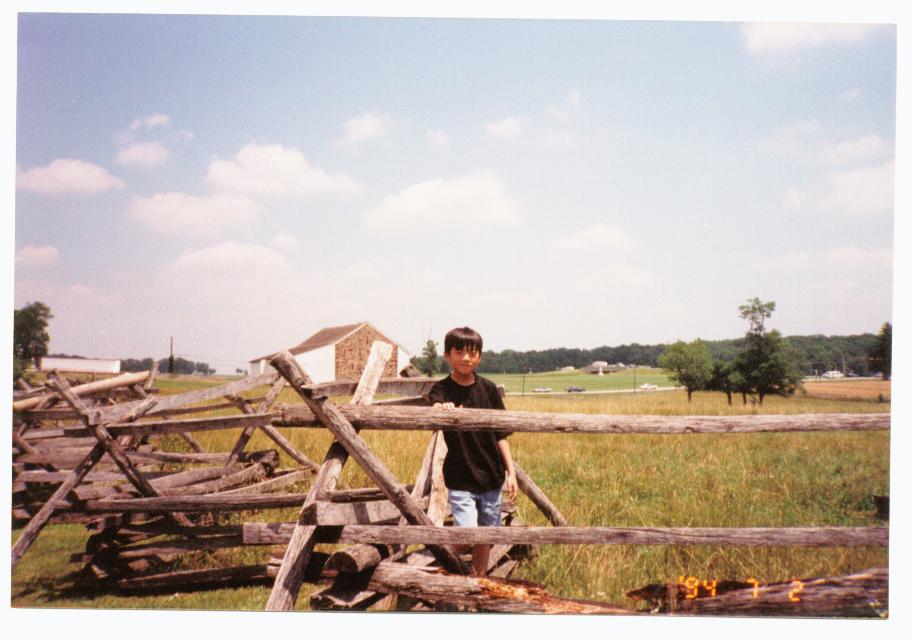
I was a big US Civil War buff back in secondary school, and over the Fourth of July holiday in '94 my mom's coworker took me to tour the Gettysburg battlefield, close to her home in Harrisburg, Pennsylvania. Everyone's heard of the "Gettysburg Address" by President Lincoln, but not many people - even Americans - have much familiarity with the battle itself, which was a key turning point in the War between the States, so here's a brief summary.
In June 1863, the Confederate (southern, or Rebel) Army of Northern Virginia invaded Pennsylvania, in an attempt to score a decisive victory against the Union (northern, or Federal) Army of the Potomac on northern soil. The two armies, totalling 150,000 men, gradually converged on Gettysburg, a town of 2,400 inhabitants (8,000 today) situated at the junction of nine major roads in southern Pennsylvania.
The battle began on July 1, 1863, when about 25,000 southerners defeated a slightly smaller number of Federals and seized Gettysburg itself. The northerners regrouped on the high ground south of town and by the following morning, the full complement of both armies had arrived on the field, with some exceptions. Some 50,000 Confederates now faced about 70,000 Federals, who had already taken the best defensive positions available and compelled General Lee, the Confederate commander, to launch a series of difficult uphill attacks.
After lengthy delays, the Rebels finally attacked late on the afternoon of July 2, punching right through the Federal line's dangerously projected left wing, but failing to occupy any portion of the main Union position on Cemetery Ridge. The Union right was also attacked, but without much consequence. By the end of the second day of fighting, northern casualties alone had reached 20,000.
On the third day, July 3, General Lee mustered all the strength he could to dislodge the Federals from their perched defenses on Cemetery Ridge. In a desperate endeavor, 13,000 Confederates under General Pickett launched what came to be known as "Pickett's Charge", marching about a mile over open farmland, exposed to fire from multiple directions. Only 200 southerners breached the Union line before the assault collapsed. The battle was decided.
The bloodiest battle ever fought in North America, Gettysburg produced 50,000 casualties, and the high price of the Union victory prompted Abraham Lincoln to dedicate a national cemetery there on November 19, 1863. The final words of his speech at the ceremony have been immortalized: . . . and that the government of the people, by the people, for the people shall not perish from the earth.
That's me standing at the spot where the battle's opening phase played out on the morning of July 1, 1863. This fence marked the Federal army's initial line of defense about 1/2 mile northwest of Gettysburg. |
 |
 |
Here I'm brandishing an 1863-era musket as two Confederate soldiers look on. Each year thousands of "reenactors" gather at Gettysburg and other battlefields to replay the action for fans to watch. They're almost like sports events. The weapons are all real, but of course the bullets and shells are fake - thankfully so is the dying |
This is the infamous "Devil's Den", a cluster of rocks and boulders that witnessed fierce fighting on the second day (July 2) and became a stronghold for Confederate sharpshooters |
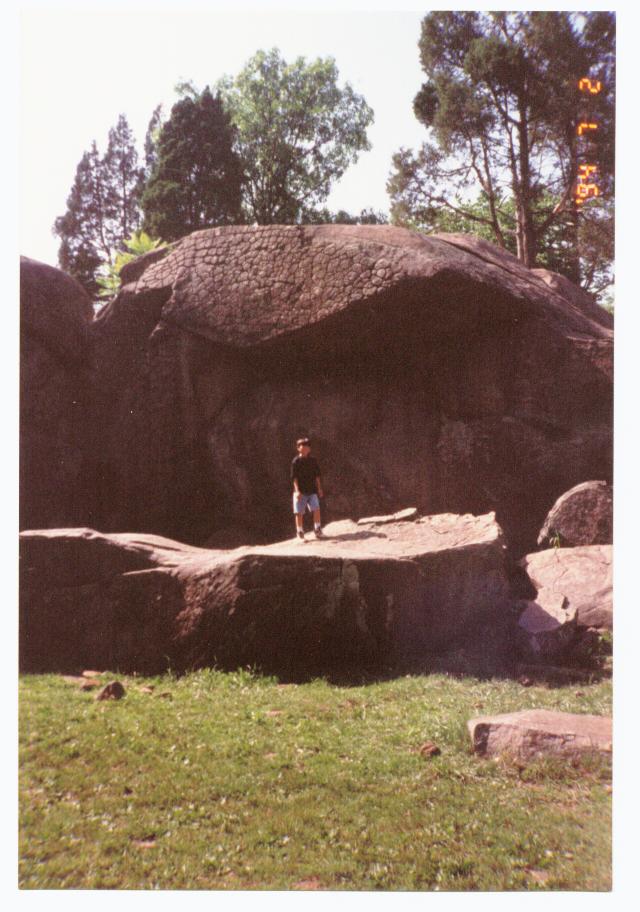 |
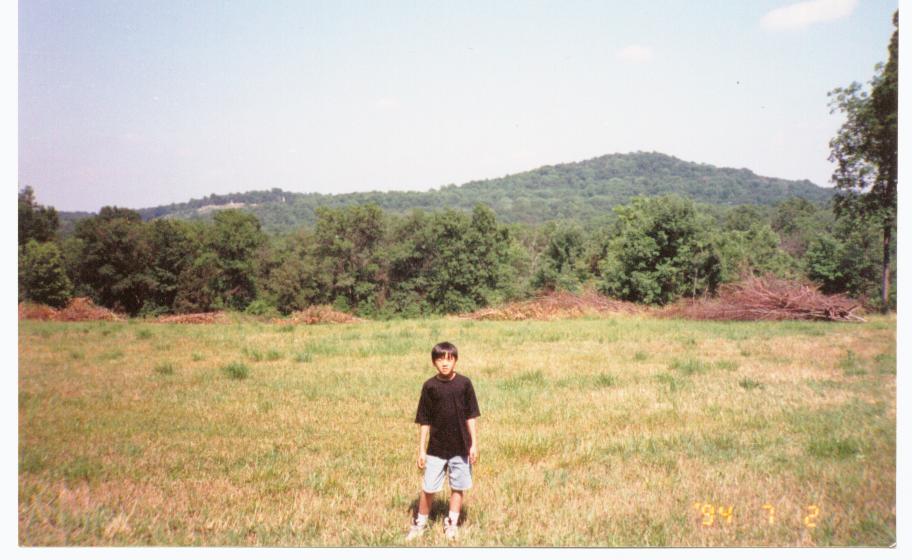 |
In the background here are the "Round Tops" - Little Round Top (left, barely discernable) and Big Round Top. These two hills marked the extreme left of the Union position on July 2, 1863. At 4:00 PM that day, a division of southern troops advanced from this spot to capture the hills, which were completely undefended. The key prize was Little Round Top which would allow the Rebels to threaten the main Federal force on Cemetery Ridge to the north |
Summit of Little Round Top: This is a statue is of General G.K. Warren, the Federal army's chief engineer. On the afternoon of July 2, Warren reached Little Round Top's summit just as the Confederates started to attack. He realized that the hill had no defenders and its fall would be a disaster for the Union. He quickly notified his commander of the danger and Little Round Top was secured by Union forces with literally minutes to spare |
 |
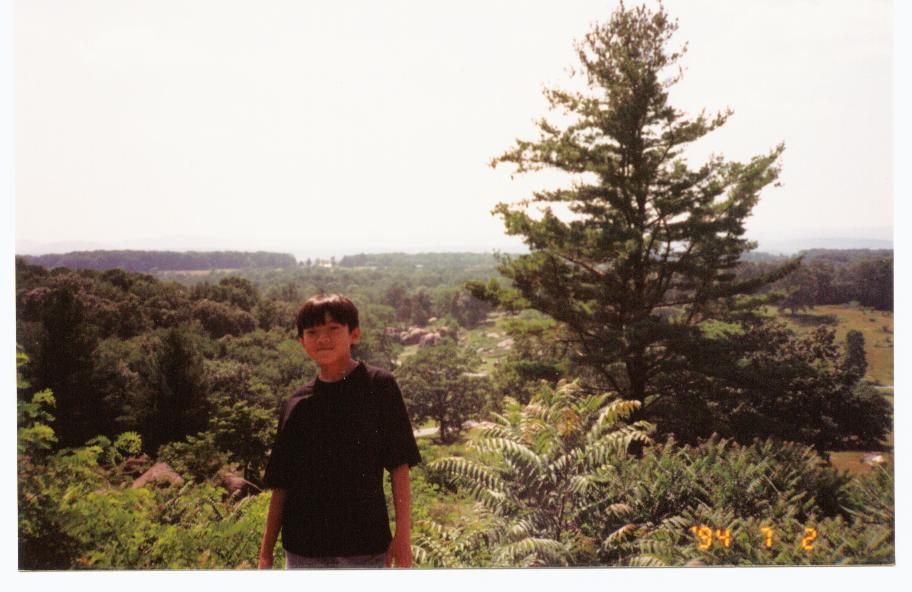 |
Summit of Little Round Top: Here's a view from the summit facing the direction of the Confederate attack. From this spot northern soldiers fought stubbornly to hold the hill. In the very center you can make out a blotch of gray surrounded by green - that's Devil's Den (see above) about 400 meters in the distance. I'm standing near the spot where two Union officers, including a general, were killed by a Rebel sharpshooter firing from those rocks |
"The Peach Orchard": This hilly orchard marked the outermost projection of the Union left wing (a V-shaped battle line) on July 2 and was attacked by Confederates from three directions. At 6:30 PM the northern troops here collapsed and began a general retreat toward Cemetery Ridge and the Round Tops, threatening the Union cause with utter defeat |
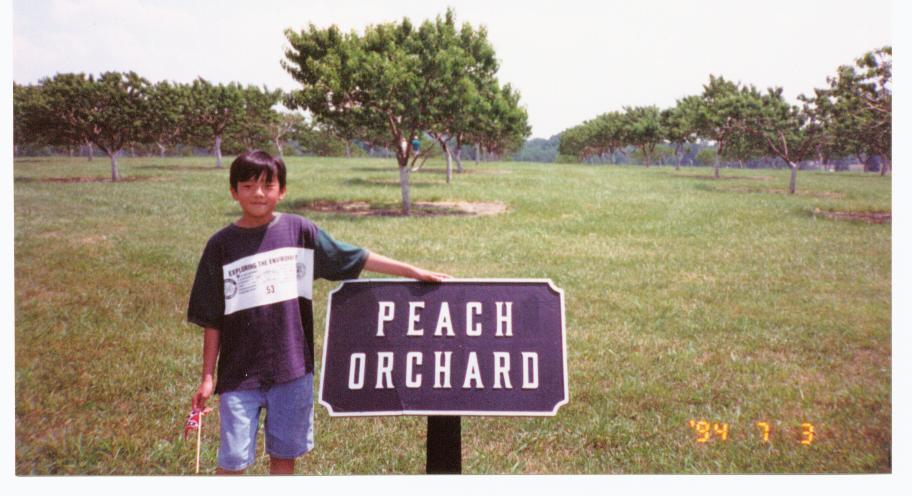 |
 |
This is a cannon in "The Wheatfield", a critical position in the Union left wing on July 2. Attacked by Rebels from several directions, it changed possession many times over 2-3 hours, finally falling to southern troops that had overrun the neighboring Peach Orchard (above), by which time some 5,000 casualties littered the 20-acre (8-hectare) field, and the waist-high wheat stalks had been thoroughly trampled. No wheat has been grown here for a century |
"Clump of Trees": Here I'm near the crest of Cemetery Ridge, the main Union position on July 2-3, 1863. The grove of trees in the background is possibly the most famous in North America - it was the converging point of the massive Confederate attack on Cemetery Ridge on the third and final day of the battle |
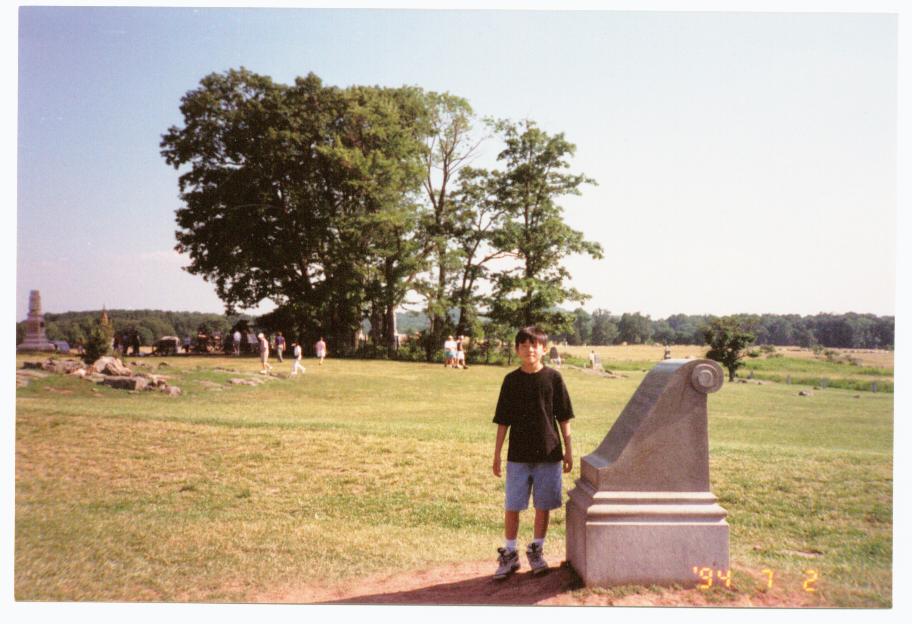 |
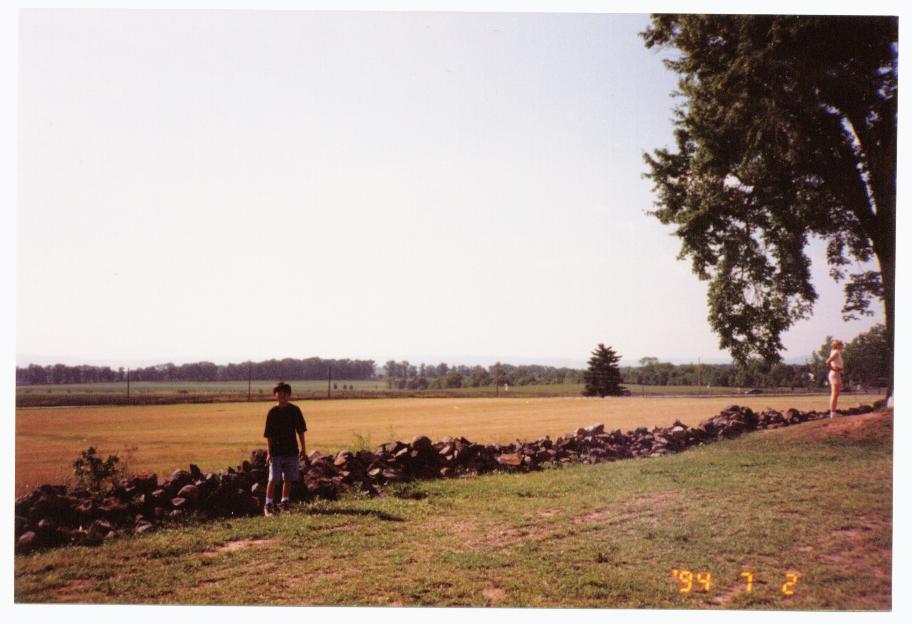 |
Directly north of the Clump of Trees, this spot is called "The Angle" because of the 90-degree bend in the low stone wall to the right of this photo. I'm standing on the side of the stone wall that the Union defenders of Cemetery Ridge were posted on, and in the left background is the portion of open farmland that the Rebels made their charge across on the afternoon of July 3. Only a handful of them made it as far as the near side of the wall, and all of these were killed or captured |